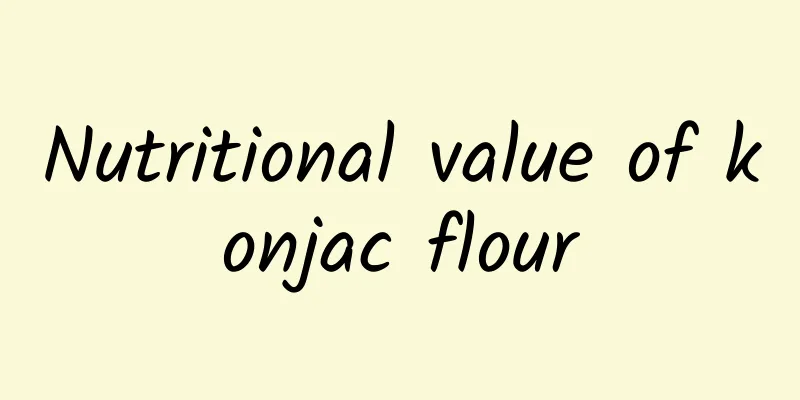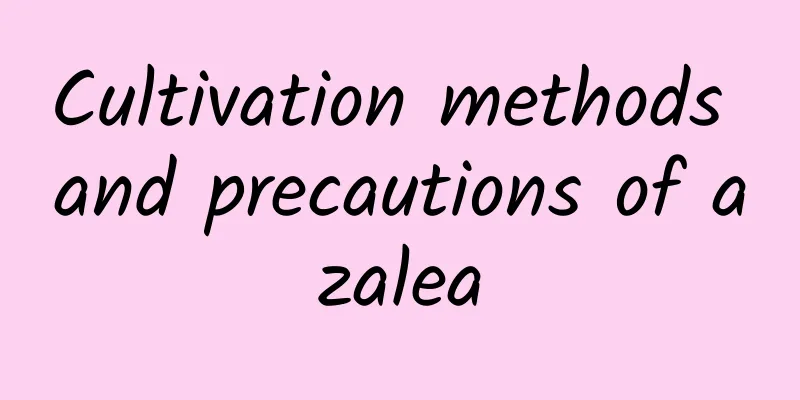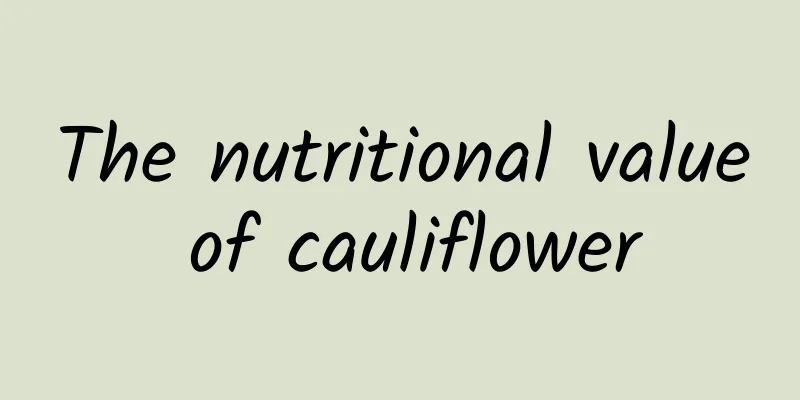Nutritional value of konjac flour

|
What are the nutritional values of konjac flour? Let's learn about it together. I hope you like it. Konjac flourKonjac flour nutritional valueThe name of konjac may be unfamiliar to many people. It is a rhizome plant, also known as glucosidase. The planting area in my country is very wide. After nearly ten years of research, konjac has been made into konjac flour. There are hundreds of foods made from konjac. And research has proved that it has many functions such as lowering blood lipids and blood sugar, preventing cancer and relieving constipation. Konjac contains glucosidase, which is a high molecular compound with strong water absorption. After absorbing water, its volume can expand 80-100 times and it is easily digested and absorbed after eating. It can also absorb cholesterol and bile acid, which has a certain effect on lowering blood pressure and reducing the onset of cardiovascular disease. Konjac also contains soluble dietary fiber, which is very effective in inhibiting the increase of blood sugar after meals. Therefore, konjac flour and its products are ideal hypoglycemic foods for diabetic patients. After application, it can reduce the burden on the pancreas. Konjac is the only economic crop found today that can provide a large amount of glucomannan. The use value of konjac in the field of food and medicine will continue to be developed and demonstrated. The edible value of konjac is that it is widely welcomed by people. The main component of konjac is glucomannan, which not only contains more than 10 kinds of amino acids and various trace elements required by the human body, but also has the characteristics of low protein, low fat and high fiber, good water absorption, high expansion rate, etc. It has medicinal effects. It has the effects of lowering blood lipids, lowering blood sugar, lowering blood pressure, losing weight, beauty, health care, laxative and many more. Konjac flour nutritional value 2The tubers of some species of the genus Amorphophallus are rich in konjac polysaccharides, especially the white konjac and flower konjac varieties, which contain up to 50-65%. Konjac polysaccharides, also known as konjac glucomannan, are linear polymer compounds composed of numerous mannose and glucose connected by tail-1,4-glycosidic bonds. On some of the glycosyl side chains of its molecules, a certain number of acetyl groups are connected. The molecular ratio of glucose to mannose is 1:1.5-1.7, and the molecular weight can be as high as 106 Daltons. It has a very high viscosity, is soluble in water, has a very large swelling degree in water, and has specific biological activity. These characteristics determine that konjac polysaccharide has a variety of uses. In addition to medicine, konjac polysaccharide has a wide range of uses in textiles, printing and dyeing, cosmetics, ceramics, fire protection, environmental protection, military industry, oil extraction, etc. In addition, 30%-40% of fly powder is produced during the processing of konjac flour. Since fly powder also contains a certain amount of glucomannan, fly powder is also a natural high-molecular compound with polyhydroxy compounds as the main body. So, like starch, it can be made into xanthate esters and used to precipitate soluble heavy metal ions in wastewater. |
>>: Nutritional value of King Oyster Mushroom
Recommend
The efficacy and function of white autumn flowers heralding spring
White Heart Autumn Primrose is a kind of flower p...
Can peppers really help you lose weight?
In recent years, we often hear about eating chili...
Ingredients and methods of stir-fried tomatoes
Fried zucchini with tomatoes sounds strange, but ...
What is Tarragona Football Club like? Tarragona Football Club reviews and website information
What is the website of Tarragona Football Club? Cl...
What are the benefits of drinking black currant juice
In daily life, people not only like to eat delici...
The benefits of spinach root porridge
How much do you know about the effects of spinach...
How to plant lily bulbs How to plant lily bulbs
Many people in life like beautiful lilies and wan...
Ingredients and steps for beef rib porridge
Beef ribs are very common in supermarkets and veg...
How is the IAAF? IAAF reviews and website information
What is the IAAF website? The International Associ...
How to make carrot and clam porridge
I believe many of my friends already know how to ...
How is Google India? Google India reviews and website information
What is Google India? Google India is the Indian v...
The efficacy and function of Lycoris
Lycoris is not a type of garlic, but a flower tha...
What are the fruits that lower blood pressure? Eating these fruits regularly is good for lowering blood pressure
Hypertension is the most common chronic disease n...
What is Amar'e Stoudemire like? Amar'e Stoudemire reviews and website information
What is Amar'e Stoudemire's website? Amar&...
Benefits of preserved egg and vegetable porridge
What are the benefits of preserved egg and vegeta...









